| |
|
Design
is the Supreme Art
by
Jake Ehrlich
I have a confession to make:
I am absolutely passionate about great design!
I’ve been fascinated by design for as long as I can remember.
As
a small child, I would play for hours on end with Lincoln Logs, Lego's, and—my
first real laptop: an Etch-a-sketch. I would build and draw everything you could imagine.
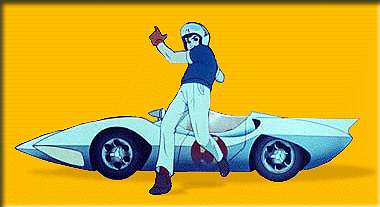
I started drawing cars when I was in third grade. Speed Racer's Mach 5 was my favorite car to draw. I must have drawn his car a million times.
I
began designing clothes back in 1983 when I was 16 years old.
It has been said that success leaves clues, and I would like to share
some of the fascinating clues I have come across in my life with you:
My
Design Philosophy
I believe design
is the supreme art. This is because all decisions we make, are—or should be—by design. Design is the foundation of everything. Even when we imporvise or decide not to make a decision, it is by design.
When an artist paints a canvas, it is by design; when a ballerina
performs, it is by design; when a ballplayer swings a bat, he swings it a
certain way—all by design.
World renowned graphic designer, Saul Bass
succinctly illustrated this axiom when he said, "Design is thinking made visual."
David
Kelly of IDEO further illustrates this by saying, "The only thing
that's not designed by us is nature. Everything else is designed."
Design
is a form of self-expression. It is the intersection of art and science, and should always be about the
pursuit of excellence. Excellence by definition is the ideal form of
anything.
God
gave us eyes so we could appreciate beauty. Great design—like
art—is beautiful, intriguing, and timeless. Whenever I design a product, I always try to make it timeless. Timeless Design, by definition is when a product looks like it is simultaneously from the past and the future.
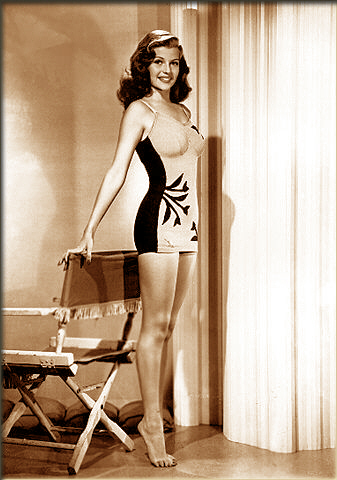
Timeless
design incorporates the most valuable, and thus, precious form. It
is based upon enduring universal principles coupled with imagination,
innovation and flair. The Golden Gate Bridge and the Chrysler
building are excellent examples of timeless design.
The
criteria in determining the value of a design is the same as a piece of
real estate. It is based upon the principle of highest and best use.
Design
is part art, and science. A design scientist would tell you that
design is 51% science (objective) and 49% art (subjective). An
artist would argue the opposite. Form versus function; utility
versus aesthetic. As a designer (and Libra) I
believe that ideally you want a perfect 50-50 balance.
My
Design Influences
My design influences run far and
wide. I have a great appreciation for Art
Nouveau (1890-1914) which includes products like Tiffany lamps. The
Art Nouveau movement came directly after the Arts and Crafts movement and
emphasized organic lines as found in nature.
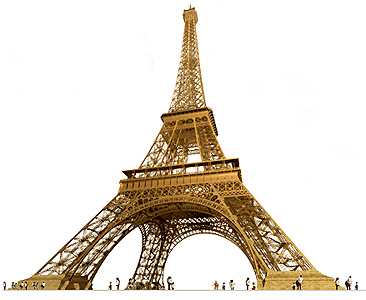
The
Eiffel Tower was built for the Universal Exhibition in celebration of the French
revolution.
The
World Fair (Exposition Universelle) held in Paris (1900) brought Art
Nouveau to the center stage as a new style in design and architecture.
Over fifty million people attended the fair which included new styles of
metalwork, glass, textiles, jewelry, furniture, ceramics, architecture and
posters.
I love Art Deco. When I was a
boy, I remember going to see the King Tut exposition and the profound
effect it had on me. There is a lot of Ancient Egyptian design influence in
Art Deco. This was due to the fact that Kind Tut was discovered in
February of 1923. The world was absolutely amazed with the beauty
and splendor of the art- work that came from King Tut's tomb, and thus many
characteristics of the 3200 year old art-form became prevalent in the Deco movement
of the late 1920s, 30s, and 1940s
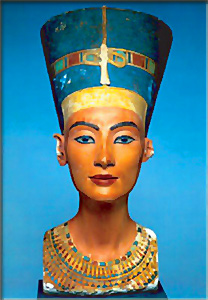
Also the extreme beauty of the Bust of Queen Nefertiti. Circa 1372 B.C.
During the 18th Dynasty (3400 Years old). The Queen Nefertiti Bust
was obtained by the Egyptian Museum in the Berlin Museum in Germany in
1912.
When I was
seventeen, I wanted to be an automotive engineer, but realized that my
talent would go to waste. Keep in mind this was during the era that
replaced the Ford Pinto with cars like the Chrysler Reliant K. Car
design was great in the 1950s but lost it in the 60s.
Great
car design is back! The best example I know of for automotive design
excellence is the Ferrari Modena 360 Spyder as seen below.


The
Spyder was designed by the legendary Italian firm, Pininfarina. Pinin
Farina said, "I perceive my work as moving sculpture."
When
it comes to literature, my favorite book that has had a superb influence
on me is Ayn Rand's, The Fountainhead. Her character,
Architect Howard Roark in particular is fascinating. I came across
the book when a woman I met told me that I reminded her very much of the
Howard Roark character in the Fountainhead.
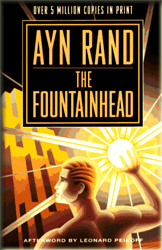
I
have had a fascination with watches since I was sixteen. There are
not many ways a man can distinguish himself accessory wise, but
wristwatches are one of them.
I
have always liked Rolex's Oyster Perpetual sports watches. Patek
Philippe and Cartier are also favorites of mine.
People
who Influenced my Sense of Style
My
father Jake Jr., and my grandfather Jake Sr., were both a great source of
inspiration. They both had a great sense of style. My
grandfather Jake, was extremely dapper and my dad was very elegant.
Growing
up, I developed a deep appreciation for the Old Hollywood of the 1950s and
early 1960s. In particular, I loved watching old Cary Grant
Movies. Cary Grant in many ways was the living embodiment of elegant
masculinity and humor. In my opinion, Cary Grant was the real James
Bond.
I
was also crazy about Sophia Loren. Sophia in many ways is my idea of
the ultimate woman. It is interesting to note that Cary and Sophia
had an affair and were almost married.
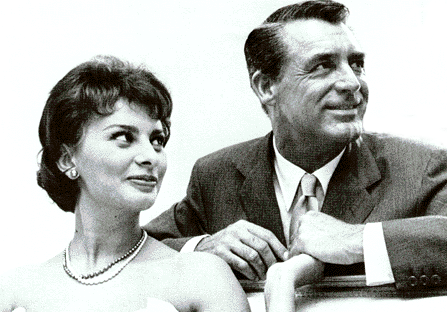
Other
actors from old Hollywood that had an influence on me include Grace Kelly,
Humphrey Bogart and Lauren Bacall, and last but not least Marylyn Monroe.
In
clothing design, my two greatest influences are Coco Chanel and Ralph
Lauren. Coco reinvented femininity for the 20th Century, and Ralph rejuvenated
American style and quality.
When it comes
to politicians whose personal style influenced my, there is JFK and Ronald
Reagan. JFK with his classic preppie style and Regan with his old Hollywood
vibe.
Ronald
Reagan was an old friend of my grandparents. The picture below is of
my grandfather Jake Ehrlich Sr., and my grandmother Evelyn with Ronal
Reagan in 1943. By the way, Reagan was a Democrat in this picture.
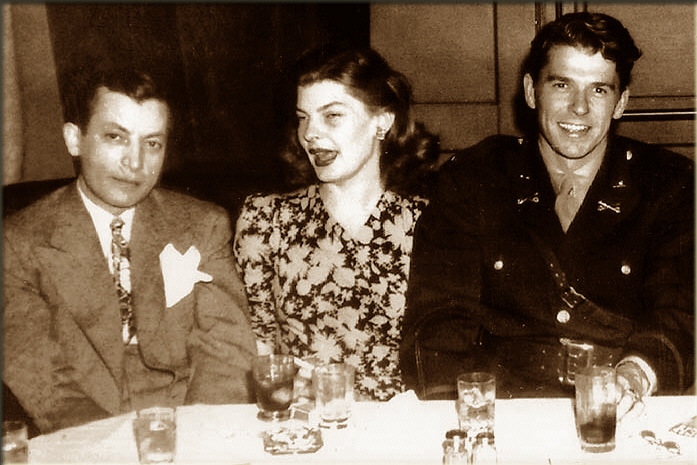
I
was fortunate to have the opportunity to talk with the Gipper about his
wardrobe and his sense of style. He shared many ideas with me about
his clothing philosophy. He told me about his tailor, Frank Mariani
who's father had first outfitted Reagan in the late thirties.
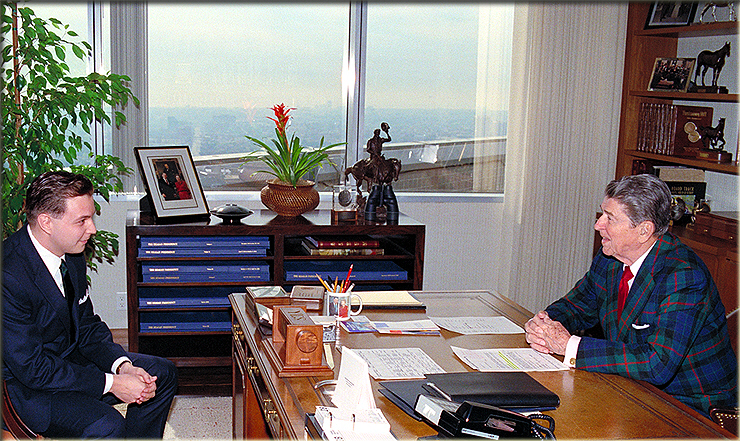
I had the opportunity to review Reagan's suit pattern that had been modified since 1938. I examined his pattern because I wanted to figure out what design elements gave him so much presence when he wore a suit. I noticed that when Reagan became the president in the early 1980s that his suits look strikingly different from the funky 1970s influenced suits that all other men were wearing.
After careful research I realized this was due to the fact that his suit
pattern was from the late 1930s and had been simply graded up as he slowly
gained weight over the decades. Up until the mid 1960s suits were V
framed in shape, and beginning is the late seventies, men's suits became A
framed in shape.
Color,
Color, Color
I
love color! I believe that color has deep psychological effects on
people. My home is filled with many different colors. The colors of
the rainbow to me are a form of Color Therapy that—like
music—sooth, inspire, and rejuvenate
the soul.
The
picture below is of my bedroom. The painting above my bed is
Vargas. Alberto Vargas' work has also been a great source of
inspiration for me over the years.
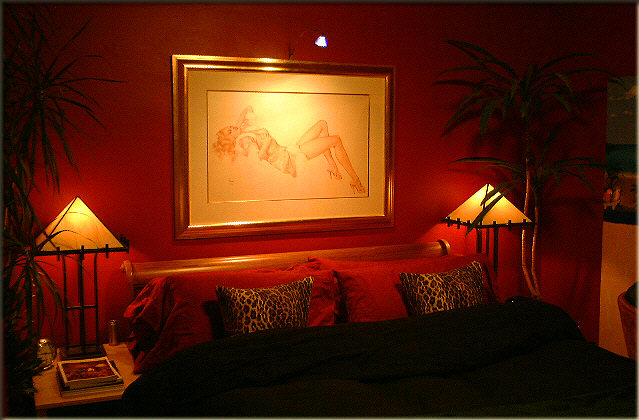
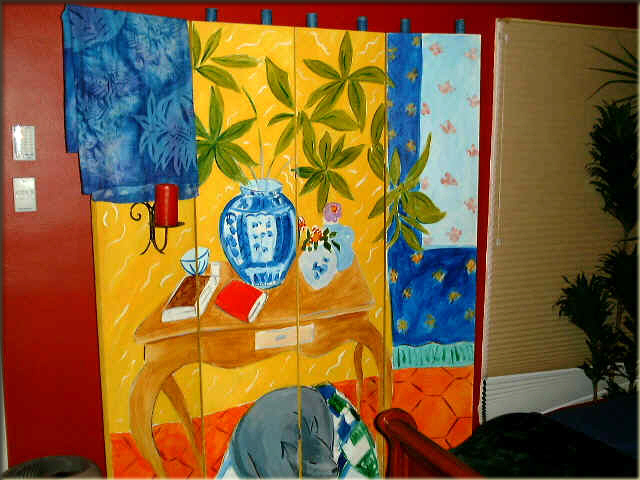
Having
been born and raised in San Francisco, it is difficult to find places that
are more geographically colorful or beautiful.
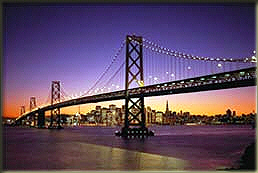
Once
such place that has been a source of inspiration for me is Bora Bora in
the Tahitian islands. Author James Michener referred to Bora Bora as
The most beautiful island in the world.

I
have never seen such a beautiful palette of colors in my life as the
sunsets and the water of Tahiti.

What is
Art?
If you carefully study the
people whose ideas have marked the upward surge of mankind you will notice
certain recurring patterns.
When I
suggest that design is the supreme art, it begs the question of what
constitutes art? I once had a conversation with Robert Cameron, the famous
aerial photographer. Cameron was a aerial surveillance photographer for
the U.S. Military during World War II. He is most famous for his Above
books, which include, Above San Francisco, Above Paris, and Above
New York.
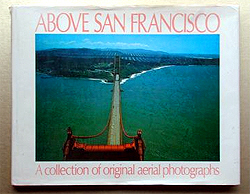
I was
having a fascinating conversation with the old boy (he was 89 years young
at the time) about photography as an art form. He told me about an
argument he had in 1970 with his contemporary and close friend, Ansel
Adams.
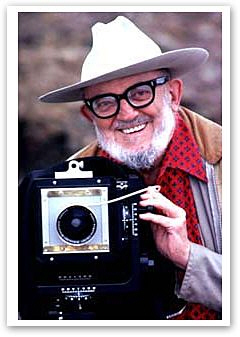
They were arguing about whether photography was an art form
or not. Robert was arguing it was not. Adams quickly
changed Cameron's mind when he responded, "Photography is the
greatest invention for recording and communicating, but if someone
receives an emotional response from one of my images, then to him it is an
art form."
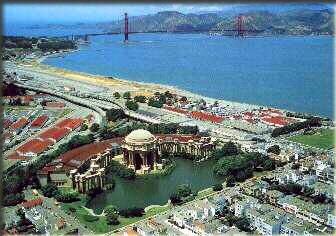
This
insight is interesting because it was between two of the greatest
photographers in history. It is particularly fascinating, in the
sense that it clearly defines art as being a form of self expression that
people have an emotional response to.
The
thing that makes design the supreme art, is that when you set out to design
something, you ultimately want the product to serve its purpose, but at the
same time you want people to not only have a positive emotional response
to it, but ideally you want them to find it to be very interesting or even
love it.
Begin
with the end in mind.

Best-selling
author, Steven Covey wrote a profound book named The 7 Habits of Highly
Effective People. One of
the 7 habits is “Begin with the end in mind.”
Because design is typically about solving problems or overcoming
challenges, it is important to begin by clearly identifying the cause of
the challenge so that you may come up with a great solution.
By starting with the end in mind
you can build a solid foundation. Keep
in mind that if the foundation is weak, the rest of the structure will be
affected accordingly. So the first
rule of great design is to always begin with the end in mind.
The
Elements of Design
All visual design may be reduced to 7 elements, factors, or dimensions.
These elements are the building blocks of art structure. They are the
alphabet or scale of graphic expression. When an artist organizes these
elements he creates form, which is design or composition. Art is man-made
order, that is, structure or form. These seven elements are the materials
from which all designs are built and consist of : 1. Line, 2. Direction, 3.
Shape, 4. Size, 5. Texture, 6. Value, and, 7. Color.
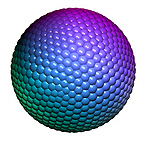
The principles of design, are the
principles by which the elements of design are related or organized include: 1.
Repetition, 2. Alteration, 3. Harmony, 4. Gradation, 5. Contrast, Opposition, or
Conflict, 6. Unity, and 7. Balance.
What is Great
Design?

Artist,
Umberto Ruiz said, "Design is evolution." Great design is typically
the result of imagination, innovation, profound thought and persistence. We
live in a Universe that is interconnected in a seamless but typically
invisible web.
In one way or another everything is
derivative; everything is connected—by degrees of separation. Pablo Picasso profoundly illustrated this when he said, "Good artists
copy. Great artists steal."

Picasso also said "I
am always doing that which I cannot do, in order that I may learn how to
do it. Charles Kettering said,
"An inventor fails 999 times, and if he succeeds once, he's in.
He treats his failures simply as practice shots.
In 1504 in
Italy, somebody asked Michelangelo how he was able to create such an outstanding
sculpture when he created David. Michelangelo
responded by saying, “I did not create David.
David was trapped in the marble; I merely chiseled away the marble and
let him out.”
Albert Einstein said, “I am enough of an artist to draw freely
upon my imagination. Imagination
is more important than knowledge. Knowledge
is limited. Imagination encircles the world.”
On persistence, Einstein said, “It's not that I'm so smart, it's just
that I stay with problems longer.”
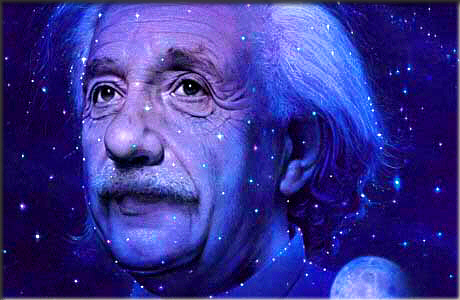
Great design, no mater how
revolutionary it appears to be, must evolve—building block, by building
block.
In design, there are no quick fixes or shortcuts. One of my
favorite French designer's, Coco Chanel, put it best when she said, “Fashion
is architecture. It is a matter of proportions.”
Design to a
large extent is a perception game, and the one thing we know for certain is that
perception is reality. At the end of the
day however, design is about creating things
that function properly and serve a specific purpose.
Terence
Conran tells us that, “Good design is probably 98% common sense.
Above all, an object must function well and efficiently—and getting
that part right requires a good deal of time and attention.”
Los Angeles
Costume designer, Adrianne Philips, profoundly illustrates this point, “The
boundaries between design and art constantly intersect.
But design, for me, is never frivolous.
And one of the essential elements that differentiates design from art is
function.”

Carlos
Jiminez, architect and professor of architecture at Rice University confirms,
"One could define design as the necessary means by which to search for and
to implement on optimum solution to a problem. A solution which merges
beauty, intelligence, and need. This is why we love well-designed objects
or spaces—They fill us with the vastness of their sensual generosity."
Louis
Sullivan taught us that “form must follow function,” and the Bauhaus
taught us that “less is more.”
Einstein, instead of using form and function, used Art and Science. Symbolism
and substance—two sides of the same
coin.
The Greatest Designer
Thomas Edison was the greatest designer of all time. During his eighty
four years of life he patented 1093 inventions. Some may say he was
an inventor, but at the end of the day, there is no difference between a
designer and an inventor.
Thomas Edison, among other things, invented, the light bulb; the
phonograph; motion pictures; the battery, the typewriter, and the stock
tickertape. He then wired the first city on earth for
electricity—New York—and created what has evolved into the largest and
most successful company on earth—General Electric.
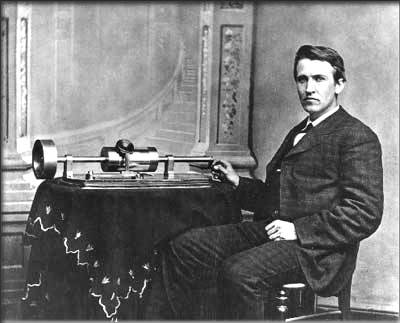
Edison said, "Of all my inventions, I liked the phonograph best.... Life's
most soothing things are sweet music and a child's goodnight."

I have always been inspired by Thomas Edison's career. As a designer
I live by his philosophy which was simple. He said,
"There is a way to do it better—find it."
Order
out of Chaos
Frank Lloyd Wright taught us about the significance of
creating “Order out of Chaos.” Great design is about separating fact
from fiction and at the same time, capturing
essence. Typically the
nature of a design is communicated by its essence or silhouette. Wright probably understood essence and silhouette
better than anyone else.
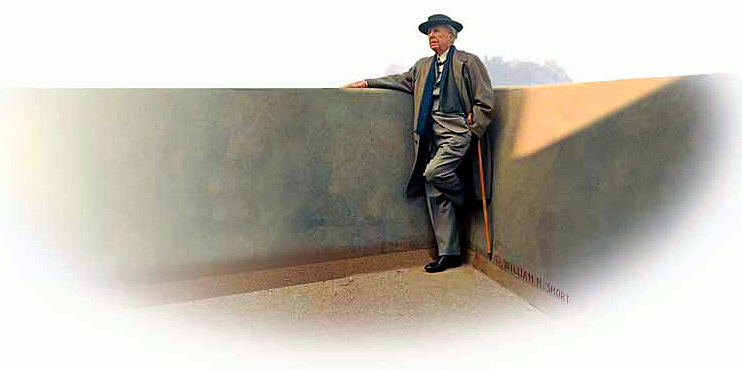
Wright
said, "God is the great mysterious motivator of what we call nature,
and it has been said often by philosophers, that nature is the will of God—and, I prefer to say that nature is the only body of God that we
shall ever see. If we wish to know the truth concerning anything, we'll
find it in the nature of that thing"

On
Fallingwater (pictured above) Frank Lloyd Wright said, "Fallingwater
is a great blessing—one
of the great blessings to be experienced here on earth. I think nothing
yet ever equaled the coordination, sympathetic expression of the great
principle of repose where forest and stream and rock and all the elements
of structure are combined so quietly that really you listen not to any
noise whatsoever although the music of the stream is there. But you listen
to Fallingwater the way you listen to the quiet of the country ...."
Wright
believed that a building should be organically connected to its environment.
He said, "Organic buildings are the strength and lightness of the
spiders' spinning, buildings qualified by light, bred by native character
to environment, married to the ground."
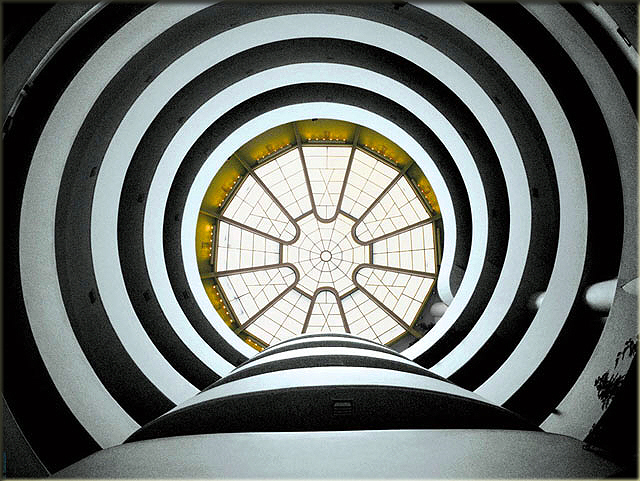
The Fine Line Between Love & Hate
When Frank Lloyd Wright first put forth his design ideas for the
Guggenheim Museum (as pictured above and below) in New York many people
complained and said it looked like a big washing machine. Today, the
Guggenheim is considered to be one of the greatest architectural
achievements of mankind.
The Guggenheim
as seen in the picture above contrasts strongly with the rest of the New
York Skyline. Wright referred to the buildings in New York as being
the work of "The glass box boy's."
The Guggenheim
is a concrete example
(no pun intended) of form following function. When you arrive at the
museum you take the elevator to the top. Then you walk down the
continuous and gentle spiral slope and view the artwork. You always
see the art coming up ahead of you, across from you and behind you.
Since we are on the subject of stunningly beautiful and inspirational New
York architecture, I must mention the Rose Center for Earth and Space.
It is an amazing piece of design work.
We Mock What We Don't Understand.
Sometimes I feel I have to hate something before I can love it. This
may be because, human nature is such that we resist change due to some
kind of evolutionary skepticism. It is true that genius is often
misunderstood and that the philosophy of one century ends up being the
common sense of the next.
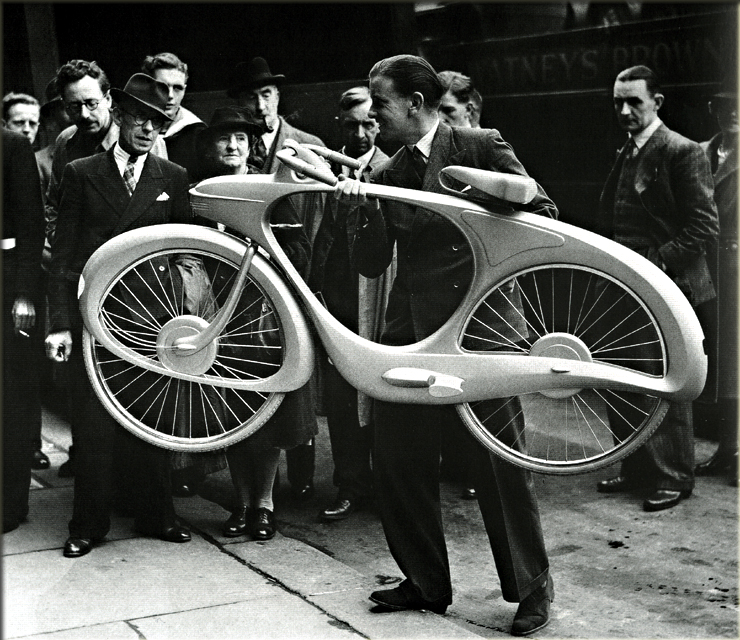
Great new ideas are often met with tremendous resistance. Less than
five hundred years ago, it was believed that the earth was flat and that
if you got to the edge you would fall off into the abyss, were there were
fire breathing dragons. When Galileo figured out that the earth was
round and not flat, the Pope told him to stop telling everybody it was
round. The Pope told Galileo that he was freaking everybody out with
his concept of a round earth. The Pope logically reasoned that if
the earth was round, that everybody would slide off.

Galileo reasoned that the sun and the moon were both round, and that if
you saw a ship come over the horizon that you would see its mast before
you would see the bulkhead. The Pope told Galileo that if he kept
telling everybody the earth was round that he would have him killed.
Galileo kept insisting so the Pope basically killed him. Imagine
that. The man considered closest to God killed the man who invented
the telescope!
From The Flintstones to the Jetson's
| |
 |
|
We have come a long way since Galileo, or have we?
Design has always been great at pushing the limits of possibility. Two bicycle
mechanics named Wilbur and Orville dreamed of building a machine from
spare bicycle parts that could fly through the sky like and bird.
They were rejected by the U.S. Patent office when they tried to patent
flight. The Commissioner of the United States Patent and Trade
Office reasoned that he could not grant a patent for something that was
impossible
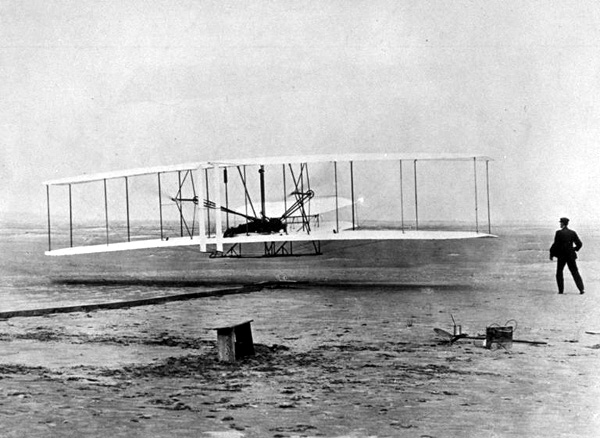
On a chilly morning on December 17, 1903 at 10:35 a.m. Orville Wright
changed the commissioners paradigm at Kitty Hawk, North Carolina which
resulted in making the world a much smaller place.
Our Global Village
In 1878 Alexander Graham Bell said:
"It is conceivable that cables of telephone wires could be laid
underground or suspended overhead, communicating with private
dwellings...Not only so, but I believe in the future, wires will unite
different cities, and a man in one part of the country may communicate..
with another in a distant place."
Once again, the world became a much smaller place.

Alexander Graham Bell understood the power of deep thought. He said:
"Don't keep forever on the public road, going only where others have
gone. Leave the beaten track occasionally... You will be certain to find
something you have never seen before. Of course, it will be a little
thing, but do not ignore it. Follow it up, explore all around it; one
discovery will lead to another, and before you know it you will have
something worth thinking about to occupy your mind. All really big
discoveries are the results of thought."
The Power of an open mind
Maintaining an open mind is crucial to achieving great design.
Muhammad Ali said,
"The man who views the world at 50 the same as he did at 20 has
wasted 30 years of his life."

There is a great Chinese proverb that says, "A closed mind is like a
closed book; just a block of wood." Thomas Dewa tells us, "Minds
are like parachutes-they only function when open."
Neil Larson says, "Insight is a shift in boundaries."
Design
is quickly changing the world!
Best-selling
Author, Tom Peters points out, "Design is a visceral understanding
that is a/the primary way to differentiate a product or
service." The way
to differentiate is with contrast. Contrast
is one of the most important factors in design. A design
that contrasts properly stands out. For example, the new VW beetle,
which essentially is a circle shape, contrasts with all normal, square
cars. The colorful Apple iMac contrasts in color and shape with all
the square beige PC boxes.
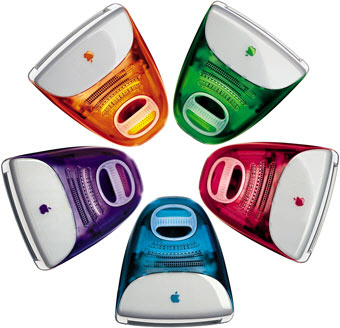
In a quickly
changing world consumers are increasingly hungry for innovative design.
Consumers are in pursuit of what is known as the "WOW! Factor."
In other words, if you want to be successful with a product, the only acceptable
response from consumers' when they first encounter the new product is
"WOW!" It is important however to understand that if the product
performs reliably, then you have a winning equation.

Kevin
Roberts, CEO of Satchi & Satchi add agency, puts it best when he said,
"The key to developing a successful brand is not to develop a great
trademark, but to develop a Lovemark.
A Lovemark is based upon developing
Lust and Trust in consumers." Roberts pointed out that he
bought his teenage daughter a new Volkswagen Beetle and that on
occasion he finds her in the garage just staring at it because she thinks
it is sooo cool! Roberts said, "If she could think of a way to
actually get it in her bedroom, I am certain she would." This example
of a Lovemark is also illustrated by the success of products like
Apple Computer's, iMac, the Palm Pilot and TIVO which help
simplify people's lives.
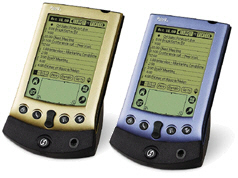
As we head
further into the information age things are moving at a much faster pace and as
a result, cycles occur much faster. Growth
is typically exponential in nature. This
is clearly illustrated by the fact that more information has been produced in
the last 30 years than during the previous 5,000.
A current weekday edition of The New York Times contains more information
than the average person was likely to come across in a lifetime during
17th-century England.
NASA, during
the Kennedy administration gave us the “Zero Defects Program,” which
ultimately put a man on the moon and resulted in much of the technology we take
for granted today. For instance,
let's say you're going to a party; you pull out some pocket change and buy a
little greeting card that plays "Happy Birthday" when it is opened.
After the party, someone tosses the card into the trash, throwing away
more computer power than existed in the entire world before 1950.
Design
Science
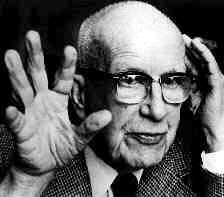
The great
American design scientist, engineer, architect, poet, philosopher, Buckminster R. Fuller said, “When
I'm working on a problem, I never think about beauty. I think only how to
solve the problem. But when I have finished, if the solution is not
beautiful, I know it is wrong.”

Frenchman,
Antoine de Saint-Exupery said in late 1789 “A designer knows he has achieved
perfection not when there is nothing left to add, but when there is nothing left
to take away.”
Alexander
Graham Bell, the genius who brought us the telephone said, "The most
successful men in the end are those whose success is the result of steady
accretion... It is the man who carefully advances step by step, with his mind
becoming wider and wider—and progressively better able to grasp any theme or
situation—persevering in what he knows to be practical, and concentrating his
thought upon it, who is bound to succeed in the greatest degree."
Johann
Wolfgang von Goethe, understood this intrinsically, when he profoundly
said, "I respect the man who knows distinctly what he wishes. The
greater part of all mischief in the world arises from the fact that men do
not sufficiently understand their own aims. They have undertaken to build
a tower, and spend no more labor on the foundation than would be necessary
to erect a hut."
Great
Design is Simple Design
The power of simplicity is
deeply profound! Leonardo da Vinci
put it best when he said, "Simplicity is the ultimate
sophistication." You’ve
undoubtedly heard it before: KISS. (Keep
It Simple Stupid) Great
design is not only dummy proof, but kindergarten simple (User Friendly).
Albert Einstein said, "Everything should be made as simple as
possible, but not simpler." Einstein
also said, "When the solution is simple, God is answering."
Ralph Waldo Emerson said “Nothing
is more simple than greatness.” Ernest Hemingway said, “My aim is to
put down on paper what I see and what I feel in the best and simplest way.” John
Ruskin said, “No architecture is so haughty as that which is simple.”

In
the Mercedes Benz 2000 brochure for their flagship S500 automobile, Mercedes
articulately illustrates the power of simplicity: "The face presented to
the user is one of intriguing simplicity. It's a rule that has endured since the
days of the earliest know designs: The better the technology, the simpler it
appears, and the easier it is to use."
Mercedes in the twenty-first century is a good example of a company that
understands that great modern design can be inspired by the past.
Everything considered classic, was once considered modern. As I said
earlier in this article, timeless design is the highest form of design.
Timeless design, by definition, is when something looks like it is from the past
and the future—simultaneously.

The
Power of Simplicity

The most powerful things in life
are the simplest. But achieving
true simplicity is complicated. When
you look at a Pyramid that was constructed in ancient Egypt, you say “what a
simple design.” Then if you try
to construct a pyramid you realize that it is quite complicated.
Same thing with the way Michael Jordan played basketball.

You saw Michael make certain moves and you thought, "how
simple" until you got out on a court and tried to duplicate them.
That's when you understand how complicated his moves really were.
This is one of the supreme paradoxes of simplicity.
Jazz musician, Charles Mingus
said it best, "Creativity is more than just being different. Anybody can
play weird—that's easy. What's hard is to be as simple as Bach.
Making the simple complicated is commonplace—making the complicated
simple, awesomely simple—that's creativity."
Jeff Hawkins, inventor of the
Palm Pilot, stressed, "One of the keys to successful product design,
is understanding the importance of a simple user experience.
That simplicity can and should stop designers from overloading devices
with too many unnecessary features."
World renowned designer Phillippe
Starck goes so far as to make the point that, "Inventing
is probably the only proper profession there is."
Socially Responsible Design
At the end of the day if a product design is not very useful it has no real
social value. If designers create half-baked products it drains society of
precious resources. I strongly believe designers have an infinite responsibility
to society to bring to life products that will not become obsolete in a short
period of time. When a product is well designed it has a long life and benefits
society.
Design is part science (function) and part form (art). A product that achieves
design
excellence has a perfect marriage between art and science (50%-50%).
The challenge is that it is very difficult to achieve this perfect harmony.
Any real designer will tell you that at the end of the day design science is
more important than design art. Science by definition is the pursuit of truth.
Art by definition as Ansel Adams pointed out is the pursuit of emotional
response.
Universal Design Principles
Magna Est Veritas is Latin. Translated into English it means Truth is
Great. As the great Toa Te Ching teaches us, "The paths are many but the way
is one." As a designer I believe this to be true with design.
Ultimately design is about the pursuit of truth. Our founding father and
designer Benjamin Franklin was very much aware of this and commonly
referred to it as universal or self evident truth.
Universal Design is a concept that was first developed by architects,
product designers, engineers and environmental design researchers, as a design
process for creating products that are geared toward people who have severe
physical handicaps.
When you are designing for people with handicaps like individuals who rely on a
wheelchair for transportation, you have to be very, very careful.
Eliminate Unnecessary Complexity
One of the cardinal rules of Universal Design is that you must Eliminate
Unnecessary Complexity.
Universal Design is a system that promotes the development of products that are
highly intuitive and equitable.
Ron Mace said, “Universal design is the design of products and environments to
be usable by all people, to the greatest extent possible, without the need for
adaptation or specialized design. The intent of universal design is to simplify
life for everyone by making products, communications, and the built environment
more usable by as many people as possible at little or no extra cost. Universal
design benefits people of all ages and abilities.”
Quality,
Quality, Quality
In the end it is all about quality: Quality of design; quality of
thought; quality of materials; quality of construction; quality of
planning; quality of execution...quality of life.
Vince
Lombardi put it best when he said, "The quality of a person's life is
in direct proportion to their commitment to excellence, regardless of
their chosen field of endeavor." Ancient Greek philosopher
Aristotle, summed
it up perfectly when he said, "We are what we repeatedly do,
excellence therefore is not an act—but a habit."
I am so passionate about great design that I have dedicated my life's
work to the understanding and development of design
excellence.
I hope you enjoyed
learning about my design philosophy. On a closing note I will let you know, I have very simple taste.
I simply like the best of everything. And always remember, design
is the supreme art. —Jake Ehrlich III,
San Francisco, California U.S.A.
© 1999-2005 Jake Ehrlich. All rights reserved.
|
|
|